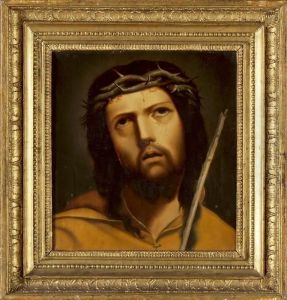Johann Georg Fischer Paintings
Johann Georg Fischer was a notable 19th-century German architect born on March 17, 1816, in Pfullingen, Kingdom of Württemberg (now part of Germany). He is known for his contributions to architecture during a period that embraced the revival of various historical styles, a characteristic of the eclectic architectural era of the 19th century. Fischer's work exemplifies the transition from classical to historicist architecture, and he is particularly recognized for his designs of churches and public buildings.
Fischer studied architecture at the Polytechnic School of Stuttgart, which was a leading institution in technical education at the time. After completing his studies, he embarked on educational journeys, a common practice among architects of the period, which allowed him to familiarize himself with various architectural styles and historical influences throughout Europe. This exposure to different forms of architecture greatly influenced his subsequent designs.
Throughout his career, Fischer was an active participant in the architectural transformation of Stuttgart, contributing significantly to its urban development. One of his most famous works is the St. John's Church (Johanneskirche) in Stuttgart, completed in the 1860s. This church is a prime example of 19th-century ecclesiastical architecture, reflecting the Gothic Revival style that was popular in Germany at the time. Fischer's design for the church emphasized verticality and featured pointed arches, ribbed vaults, and flying buttresses, all of which were characteristic elements of the Gothic Revival.
In addition to religious buildings, Fischer designed a number of secular structures, including schools, hospitals, and other public buildings. His style was versatile, adapting to the specific requirements and context of each project, yet he maintained a consistent quality of craftsmanship and attention to detail.
Johann Georg Fischer's contribution to the architectural landscape of 19th-century Germany was significant, and his work left a lasting impression on the built environment. He passed away on November 22, 1897, in Stuttgart. His legacy is preserved not only in his surviving buildings but also in the way he represented the spirit of his time through architecture, bridging the gap between traditional forms and the emerging historicist trends of his era.
